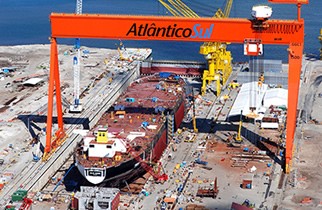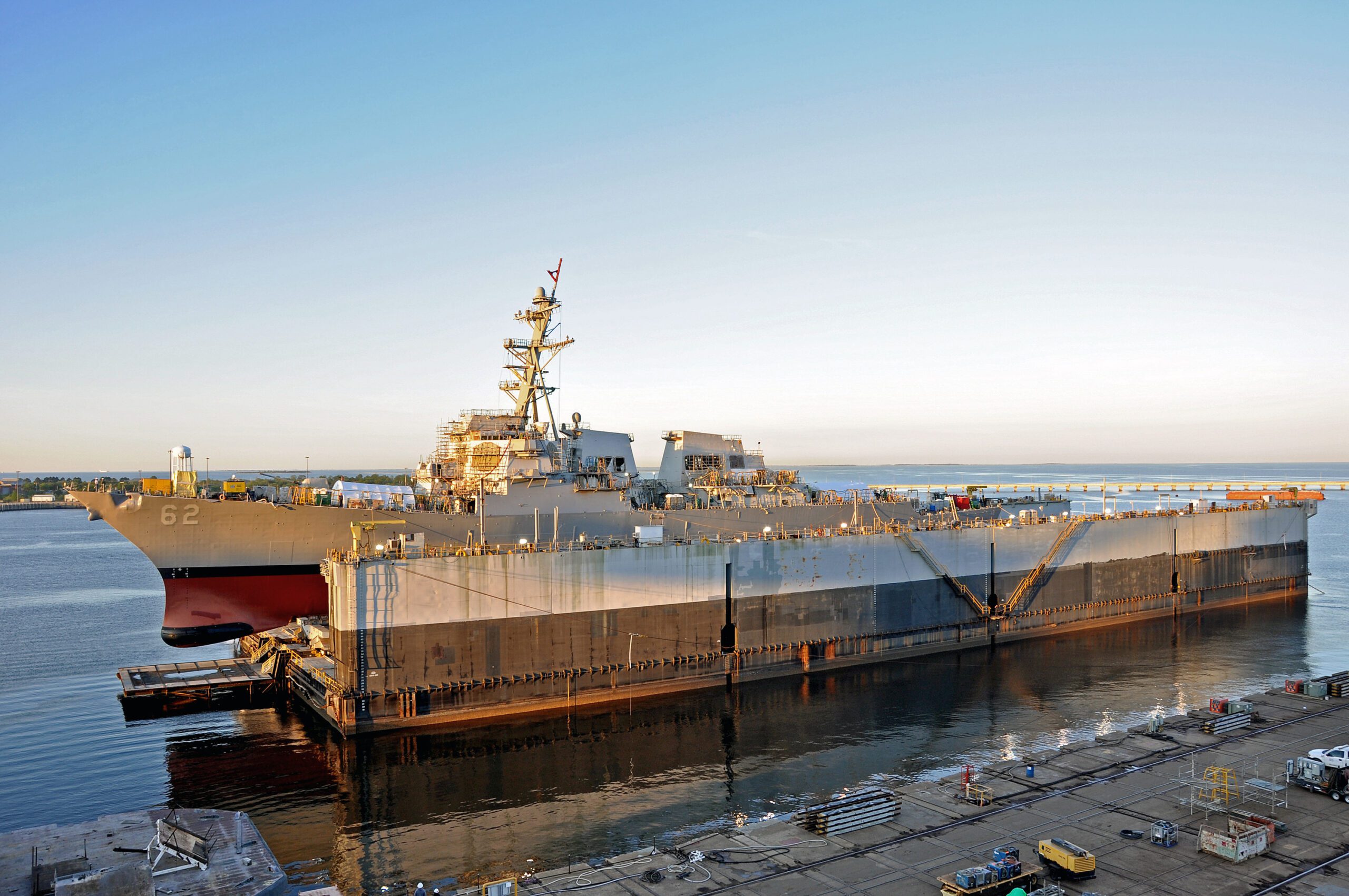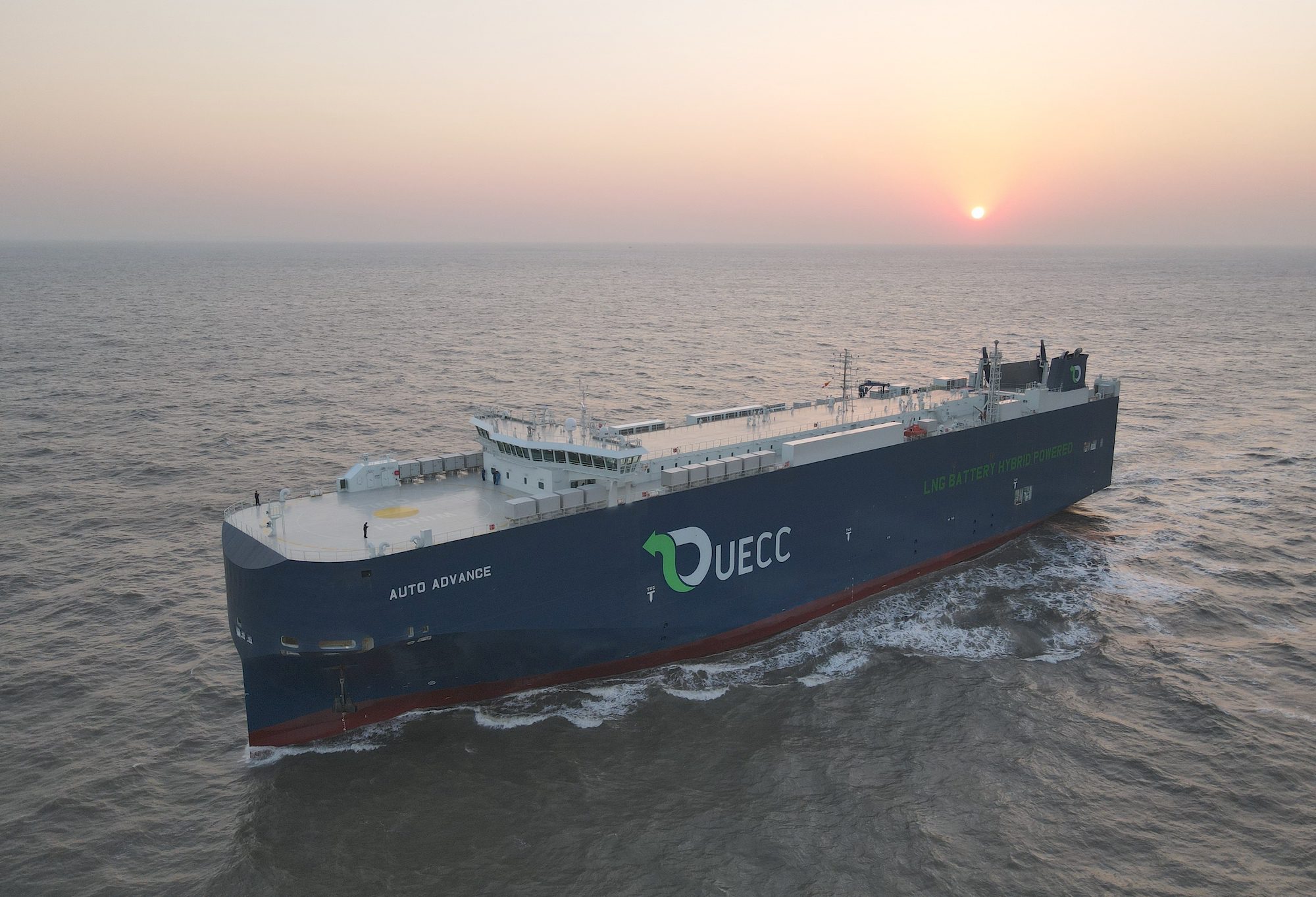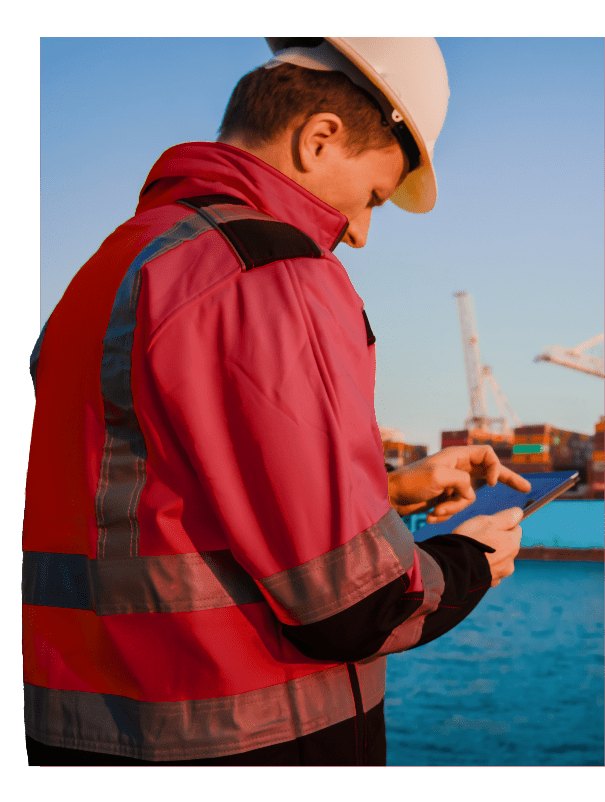Shipbuilding at Estaleiro Atlântico Sul in Brazil
By Anna Miars,
Unlike the samba beats that punctuate the late night air in Rio de Janeiro, it’s the clamor of construction equipment and hum of machinery that dictate the rhythm of daily life in the Brazilian state of Pernambuco.
About 1,200 miles to the northeast of Rio, late nights in this part of the country are harder to come by outside of Carnival. The din of industrial activity rises with the sun.
Situated just south of Recife, the state capital, the mills, processing plants, and technology centers of the Suape Port-Industrial Complex dominate the coastal landscape. The complex stretches over 52 square miles and is home to more than 100 companies, among them Estaleiro Atlântico Sul (EAS), the largest shipyard in the southern hemisphere.
“It’s expansive, busy, and loud,” said Frank DuBois, an associate professor who specializes in operations management and international business. DuBois studied the development of EAS with a colleague at the University of Pernambuco. “You feel like you’re in a city, with vehicles and railroad cars and cranes in constant motion. The amount of activity is staggering.”
DuBois has closely followed EAS’s progress, from breaking ground in 2007 through the recent launch of the first oil tanker. He grew up in Tidewater, Virginia, a region known for shipbuilding, and has a longstanding interest in international maritime business.
While the hustle and bustle may seem to be contained within the complex, all the activity on land can be traced back to a thick, black substance just offshore. More than a mile below the ocean’s surface, oil, in vast amounts, is pooled under domes of salt.
Black Gold
About 50 billion barrels’ worth of oil—enough to fully supply the US for more than seven years—was discovered off the coast over the last decade. These reserves rival those of Kuwait, Russia, or West Africa.
Trapped under 65-million-year-old geological formations more than four miles below the seabed, these oil deposits have solidified expectations that Brazil could eventually become a major exporter of crude oil.
Today, the country is the world’s 11th-largest oil producer, but output is expected to more than double From current levels to 4.9 million barrels per day. By 2020 it should be in the top five—a prospect set to generate wealth on a transformative scale.
Much of that capital will directly benefit the public sector; oil exploration and extraction is led by Petrobras, the majority state-owned energy company.
The joy of discovery gave way to the realization that Brazil’s existing transportation and logistics infrastructure were not adequate, given the magnitude of the reserves and the complexity involved in reaching them. as the potential of the deposits was recognized, a need for new supply ships, tankers, drilling rigs, oil platforms, and associated equipment became evident.
In 2011, 180 vessels supported Petrobras’s daily operations, directed by Transpetro, the transportation arm of Petrobras. Of those only 53 were owned; the rest were under charter. Petrobras decided to shift expenditures away from such short-term charters into a strategy of equipment ownership, DuBois noted.
The Brazilian government, in an effort to ensure that this unexpected financial windfall would be put to good use, launched a fleet modernization and expansion initiative to reinvest oil revenues into the development of an internationally viable shipbuilding industry. This endeavor wasn’t entirely new, but rather a revival; Brazil’s shipyards had been among the largest in the world before falling into decline during the financial crisis of the 1980s.
The government acknowledged that most ship builders in country were incapable of implementing cutting-edge construction techniques, so a new player was considered.
A Young Cluster
When the Brazilian government decided to expand its shipbuilding industry to support oil drilling and production, EAS was no more than an idea on paper.
“Brazil took an area where there was nothing and carved out a shipyard,” said DuBois. “Everything was built from the ground up—a distinct advantage over using older, smaller shipyards.”
Industries often develop organically with little encouragement from government (aside from protection of property rights and development of infrastructure), forming around naturally occurring resource deposits or where conditions are just right for cultivation. Diamonds in South Africa. Silk in China. Corn in the US Midwest.
The same isn’t true of clusters.
Industrial clusters—concentrations of supplier and buyer firms in a particular industry—are nurtured by proximity to geographic, cultural, and institutional advantages. Hollywood’s filmmaking moguls and the Italian footwear industry started this way. So did Bangalore, the Silicon Valley of India. It’s no accident that high-tech companies want to set up shop there: it’s an attractive environment for doing business.
Brazil hoped to establish a shipbuilding cluster using a similar approach. In contrast to typical cluster formation, the Brazilian government played a critical role as an incubator. Without economic incentives in the form of subsidies, tax benefits, and other advantages, it is unlikely that the necessary resources and competencies would have amassed in Pernambuco independently.
Limited research exists on the relationship between cluster development and the creation of globally competitive national industries in emerging markets. DuBois’s work is helping to fill this gap, examining unique qualities and tendencies in Brazil and creating a model from the findings that can be applied to other countries pursuing similar activities.
Using business guru Michael Porter’s diamond factor model, which suggests that there are specific conditions necessary to support and reinforce cluster formation, DuBois argues that traditional forms of industrial policy are hostile to the emergence of globally competitive industries.
Ideal conditions include cooperative partners to enter into the venture, a willingness to take risks, a supply base to support the industry, and talented labor supervised by competent management.
In the case of EAS, without the demand conditions created by the government’s need to replace shipping and exploration infrastructure, privately held, local construction firms Camargo Correa and Queiroz Galvao would not have collaborated to attract foreign investor Samsung Heavy Industries to the project. Brought in to advise on shipyard layout and tanker design, Samsung’s involvement was critical to EAS receiving the $4.63 billion contract.
“EAS is trying to leapfrog the cluster development process by allying with Samsung,” DuBois said. “The expectation from the beginning has been that the project will come together very quickly so that the benefits can be derived as soon as possible.”
But setting up a reliable supply chain and training thousands of workers is slowing down the pace. In emerging markets, economic investment and growth doesn’t happen over time the way it does in developed countries. Instead, it’s put on a fast track.
“In Pernambuco, the economy was overly dependent on a limited number of agricultural and mineral commodities, with few prospects for progress,” DuBois wrote. “Yesterday many of the workers were fisherman and today they’re welders because of EAS.”
Jump-starting the industry and meeting orders on schedule has proved ambitious. “all parties really took on more than was feasible,” he said. “You have to remember that NASA blew up a lot of rockets before it put a man on the moon.”
A massive investment requires massive oversight, which in turn requires massive tolerance.
Without a legacy of success on which to build, regionally or within management, EAS is grappling with the realization that it might have promised more than it can deliver.
Rough Seas
Like the first tanker to go into operation, EAS has faced considerable challenges that have raised concerns about its capacity to meet demand.
Stakeholders Camargo Correa and Queiroz Galvao now each hold 50 percent of EAS, after Samsung sold its stake in March because performance metrics were deemed unacceptable.
The João Cândido, a 935-foot-long tanker capable of carrying up to a million barrels of oil, went to sea trials after 50 months and $180 million, taking five times longer to build than anticipated and costing three times more than international standards.
It’s not uncommon for first vessels to suffer long delays and go over budget while a new yard finds its stride, but EAS has yet to settle into a steady state. Three years after its establishment, the shipyard has a backorder of 22 vessels.
Despite wanting to believe that EAS can provide the industry with a fresh start, Petrobras has threatened to take its business elsewhere if EAS can’t guarantee a reliable timetable for the construction of the ships.
The energy giant has suspended the purchase of 16 ships from its original order (NOTE: Transpetro last week reinstated four of the newbuilds). Purchasing contracts will remain suspended until EAS finds a partner with technical experience in shipbuilding.
“Like any first endeavor, it will take a while to get down the learning curve,” DuBois said. “But now the pressure is on. If they want to stay in business, they’re going to have to resolve these issues promptly.”
On top of these requirements, EAS is struggling to develop local supply sources for parts and components. The government has mandated that at least two-thirds of the content used at the shipyard be sourced from within the country. local suppliers still must prove that they are qualified for the task, meeting protocols, labor standards, and environ- mental benchmarks.
Everything from fire suppression equipment to lighting systems must comply with technical and safety requirements demanded by certification groups like the International Maritime Organization. If suppliers are not in compliance with regulations, the ships cannot be insured and will likely never see open water.
Anticipating that EAS may flounder, mining billionaire Eike Batista—the Donald Trump of Brazil—has announced plans to build new yards and bid for the government’s business when the time comes.
To top it off, EAS is on its third CEO in five years. It is clear that the government is unhappy with the way things are progressing.
“Interviewees that we contacted in the initial stage of this research project in 2010 are no longer with the firm,” DuBois said. “Managerial competence—especially difficult to find in emerging markets—is going to be a big challenge.”
All of these setbacks come as no surprise to DuBois. What EAS is facing is typical of a late- comer to a global industry as it tries to catch up to its competitors.
“More than anything the government needs to be tolerant and allow EAS to go through the typical stages of a startup,” he said. “They’re going to make their share of mistakes.”
In South Korea, the automotive manufacturer Hyundai, which had no prior experience in ship- building, was able to build a completely integrated shipyard in the 1970s with help from the government. It is now the world’s largest shipbuilder.
The scale of EAS puts it on the same level as Hyundai’s shipyards and others in Asia, which stand today at the forefront of the international shipbuilding industry.
The precedent has been set and the requisite pieces are in place. Now EAS just needs to keep its head above water and follow the course.
DuBois’s study with Marcos Primo, “Technological Capabilities of Brazilian Shipbuilding Clusters,” was published in the Journal of Technology Management & Innovation in 2012.
Credit: By Anna Miars, Faculty Research, Fall 2012, Global Impact | American University’s Kogod School of Business http://kogodnow.com/
Unlock Exclusive Insights Today!
Join the gCaptain Club for curated content, insider opinions, and vibrant community discussions.

 Join The Club
Join The Club











